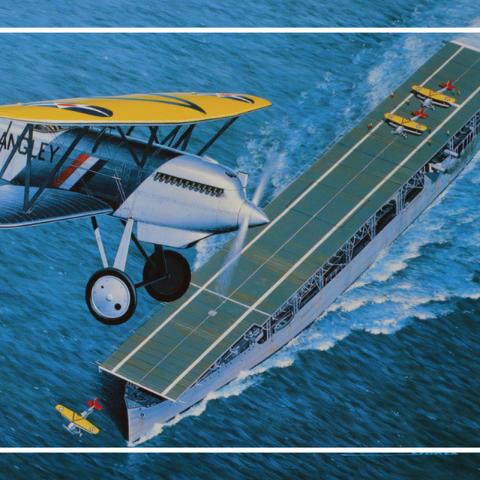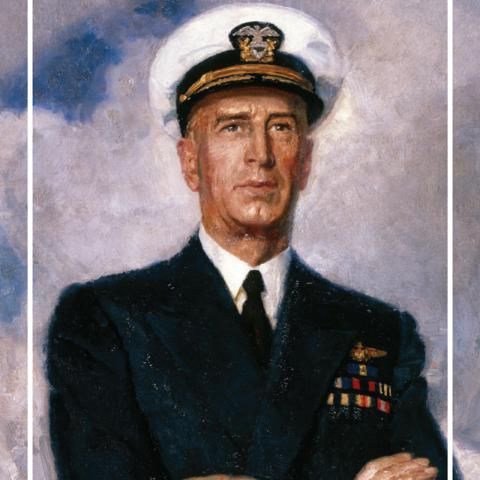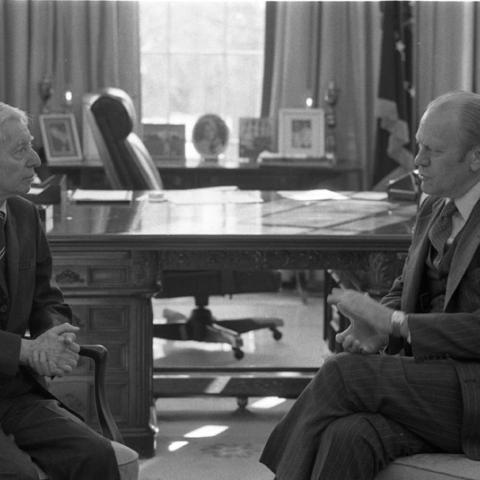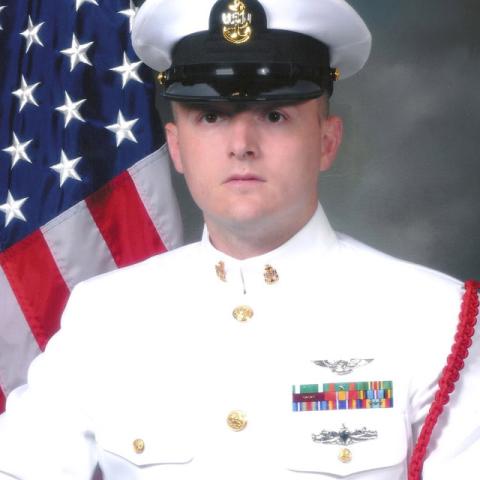Introduction
The USS Gerald R. Ford (CVN 78) launched in 2017 as the largest, most powerful warship the world had ever seen - ten times larger than the USS Langley (CV 1), America's first aircraft carrier. The Ford defined a new class of these capital ships, more dynamic, more capable than any that has sailed before her. Yet the legacy of her predecessors dating back nearly a century can be seen in her lines and courses through her steel.
This online exhibit explores the history of the American aircraft carrier - from the early 20th century when hydraulic gears launched airplanes made of wood and fabric from decks planked with wood; to the 21st century, when carbon-fiber jets are launched from electric rails.
President Washington believed that with a "decisive naval force," America can do "everything honorable and glorious." Carriers earned glory in the great naval battles of World War II, and in the post-war years proved Theodore Roosevelt's studied observation that, "A good Navy is not a provocation to war..." but "...the surest guarantee of peace." The USS Gerald R. Ford, like the Nimitz, the Enterprise, the Forrestal, and the Essex, continues this tradition, serving as a primary guarantee of the peaceful, free use of the seas.
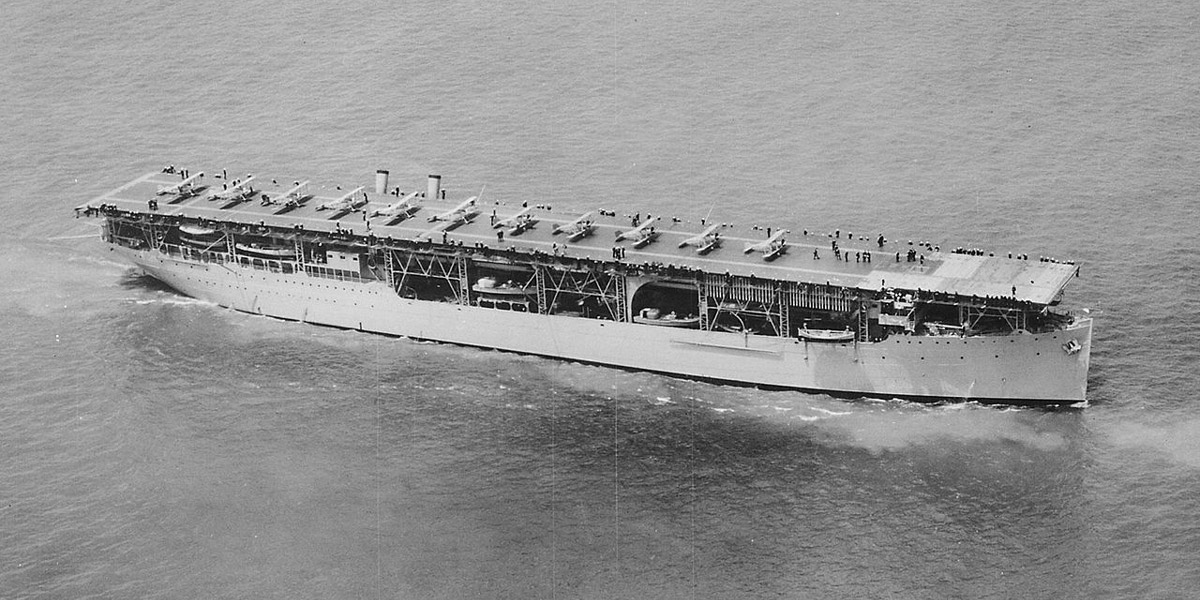
Early Carriers
In 1912 Great Britain launched the first airplane from the deck of a moving ship, and Japan launched sea planes in air raids as early as 1914. Within four years, the British converted an ocean liner to a flattop carrier of aircraft whose primary purpose was to launch and land airplanes at sea.
By 1922 the United States converted a coaling ship into its first aircraft carrier. The USS Langley (CV-1) was soon followed by the Lexington and Saratoga, two converted cruisers. With these three vessels, America was keeping pace not only with Great Britain, but also with Japan, whose navy covered the western Pacific Ocean.
Between the great wars, these three naval powers joined Italy and France to try to limit the size and cost of their fleets. They signed the Washington Treaty in 1922, restricting the tonnage of the battleships, which were still seen as the primary ship of all navies. But carriers, too, were limited by the treaty. The Washington Treaty would survive unchallenged for twelve years. The United States began building the bigger carriers by 1937, and used them in 1941 after the attack on Pearl Harbor.
Artifacts
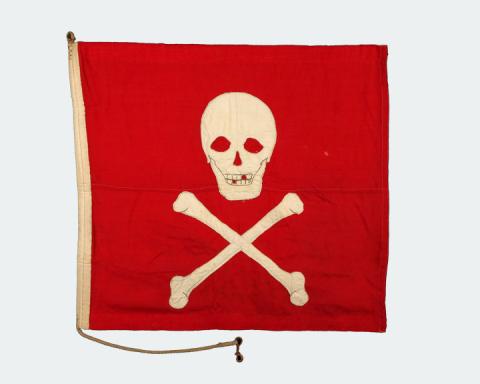
Jolly Roger Flag
Jolly Roger flag flown on the USS Ranger when she crossed the equator on August 24, 1934 during her shakedown cruise. Image Courtesy of The Mariner's Museum, Newport News, Virginia. Gift of Mrs. William F. Graham.
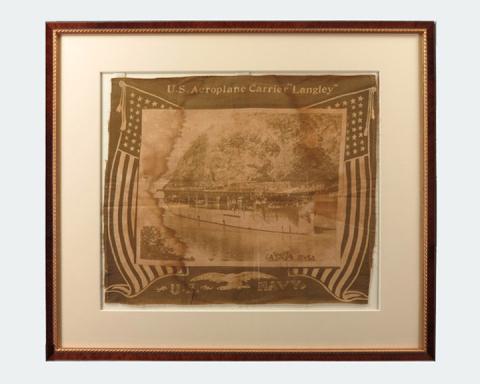
USS Langley Memorial Souvenir
Built from a converted collier (or coaling ship), the USS Langley became America's first aircraft carrier in 1922. She served primarily as an experimental ship, allowing early naval aviators to pioneer methods of launching and landing aircraft. The Langley was nicknamed the "Covered Wagon" for her tall, flush-deck design. Image Courtesy of The Mariners' Museum, Newport News, Virginia. Gift of Mr. Ferman W. Christensen.

Grumman F3F Biplane
The Grumman F3F biplane found service in the U.S. Navy during the late 1930s. It became the last biplane design used by the U.S. Navy. The F3F was the precursor to Grumman's F4F Wildcat of World War II fame. Image Courtesy of Andrew DeBoer.

World War II
As the 1930s drew to a close, war seemed increasingly inevitable. Germany extended its reach into Eastern Europe, and Japan moved westward and southward into Manchuria and the South China Sea. As the navies readied for war, admirals held to the idea that big guns on big ships decided naval battles. Aircraft carriers were to act as auxiliaries to the battle line, providing air cover for those big guns. In 1940 Germany commissioned the Bismarck, a ship that could throw its largest shells almost 20 miles. The primary objective of Japan's attack on Pearl Harbor was to sink the eight battleships moored there.
In each case, however, old tactics failed - the Bismarck was sunk by aircraft launched from two British carriers; Japan did not devastate Pearl Harbor from battleships but with torpedo bombers and fighters launched from Japanese aircraft carriers. The rules had changed; the "capital" ship was no longer the battleship but the aircraft carrier.
When the United States entered the war, the Navy sailed seven fleet aircraft carriers and one escort carrier. Most served in the Pacific, and by the end of 1942 the Japanese navy had sunk four of those. However by the war's end, American industry would send the Navy 110 aircraft carriers of different designs, configurations, and missions.
Meanwhile, in the Atlantic, carrier aircraft proved one of the most effective weapons against German U-boats, sending airplanes aloft to find and sink Nazi submarines. Carriers helped turn the tide in the Battle of the Atlantic, the war's longest engagement. The carrier-centered fleet was crucial to Allied victory in World War II.
Technology was pivotal in the outcome of World War II. Nowhere did the dramatic changes become more visible than on the open seas and in the skies. Sophisticated systems were developed for detection, navigation, communication, flight, and weaponry. As the fighting potential of America's ships and aircraft grew exponentially, enemy efforts grew more desperate.
The equipment used aboard ship before and after the war differed considerably. High-frequency radar extended detection capabilities and gave U.S. ships "eyes" at night. Radio communication extended greater distances. The large anti-aircraft guns and gyroscopic sights found on all major naval vessels by the end of the war were nonexistent prior to 1940. The rapid innovations even extended to supplying naval ships with fleet oilers that replaced scattered coal stations.
Artifacts
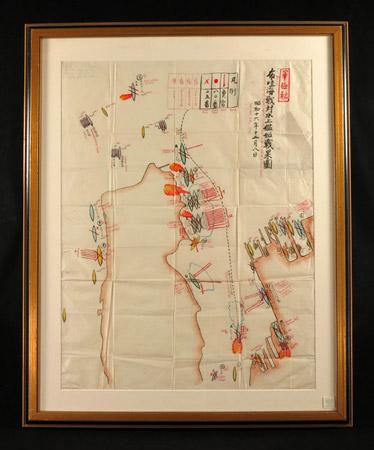
Fuchida Map of Pearl Harbor
This hand drawn map of the December 7, 1941 attack on Pearl Harbor illustrates the destruction caused to the U.S. Pacific Fleet. Commander Mitsuo Fuchida drew the detailed map for presentation to Emperor Hirohito. Keys on the map differentiate the types of bombs and torpedoes used, and the amount of damage inflicted. This meticulous rendering also clearly illustrates the positions of all the American ships. The devastating attack left 21 ships severely damaged or sunk, with over 2,400 dead. This event not only drew America into the war, but it clearly demonstrated the destructive potential of aircraft carriers. Loan Courtesy of the Kislak Foundation.
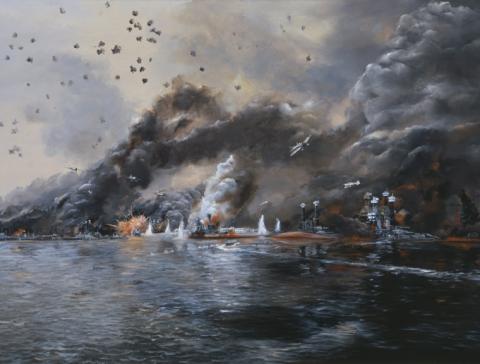
"Battleship Row in Flames - December 7, 1941"
Artwork by John Hamilton. Image Courtesy of the Navy Art Collection, Washington Navy Yards
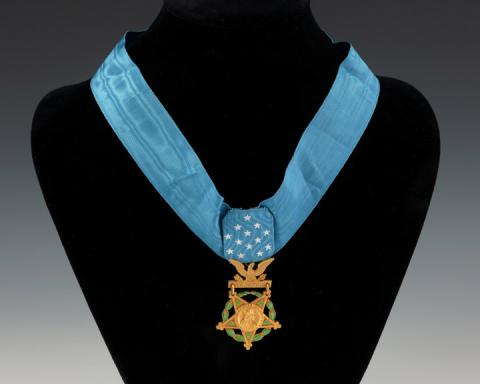
Doolittle's Medal of Honor
Immediately following the attack on Pearl Harbor, President Franklin Roosevelt pressed his military commanders to conduct a bombing mission on Japan. The operation was commanded by Lt. Col. Jimmy Doolittle. In what became known as the "Doolittle Raid," 16 modified B-25 bombers launched off the USS Hornet in April 1942. They successfully bombed targets in and around Tokyo. Doolittle subsequently received the Medal of Honor for his leadership. Loan Courtesy of the McDermott Library, University of Texas at Dallas.

Mark 14 Gunsight
The Mark 14 Gunsight revolutionized anti-aircraft weaponry for U.S. Naval ships and was one of the main reasons Imperial Japan shifted to desperate, kamikaze tactics in the Pacific. This Mark 14 Mod 8 Gunsight was used on 40mm Bofor anti-aircraft guns that populated the decks of American aircraft carriers. The revolutionary gunsight could function on several different gun platforms with a devastating effect that changed the course of the war. Loan Courtesy of the Computer History Museum.
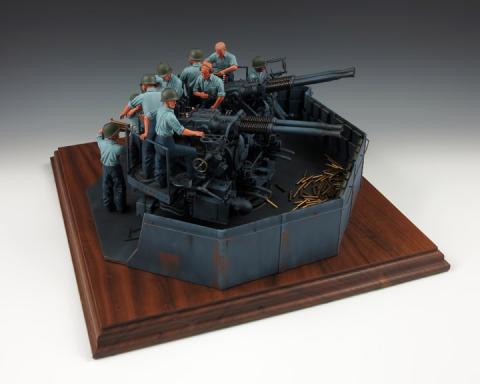
Bofors Anti-Aircraft Gun
The Bofors 40mm anti-aircraft gun was one of the deadliest weapons platforms of its day. The U.S. Navy deployed it to most of their ships during World War II and they dropped enemy planes from the sky with astonishing accuracy. This diorama shows a Bofors gun crew in action. Loan Courtesy of the Mariners' Museum, Newport News, Virginia.
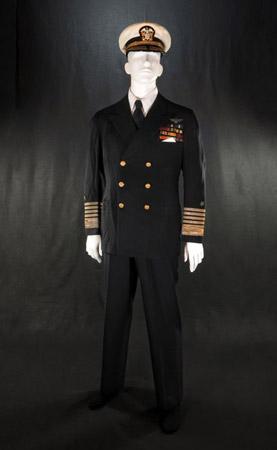
Admiral King's WW II Uniform
Admiral Ernest J. King's dress blue uniform from World War II. Loan Courtesy of the Naval History and Heritage Command, Washington Naval Yards.
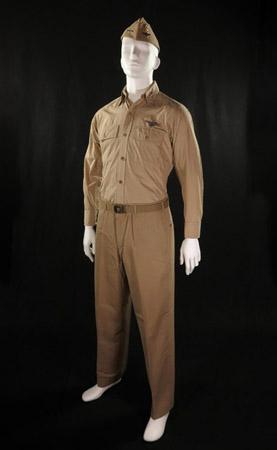
Admiral Halsey's WW II Uniform
Admiral William "Bull" Halsey, Jr.'s World War II khaki uniform. Loan Courtesy of the Naval History and Heritage Command, Washington Naval Yards.

Early Cold War
By 1945, Asia and Europe lay in ruin. The United States emerged as a global power, its homeland and industry unscathed by war.
The Soviet Union, formerly an ally, now stood ready to challenge America and the West. Already much of Eastern Europe lay behind what Great Britain's Prime Minister, Winston Churchill, called the "Iron Curtain." In the next global war, the Soviets could move against the West and China with no need for a navy. Yet Communist Russia built a powerful fleet seeking to trump America's one great advantage - the U.S. Navy.
To prepare for the Cold War, the United States developed strategic aircraft, concealed intercontinental missiles throughout the Midwest, and launched a fleet of ballistic missile submarines. The strength of its defense, however, lay in the nation's surface fleet. President John Kennedy argued, "Control of the seas means security; control of the seas means peace; control of the seas can mean victory."
Control of the seas, for the United States, meant aircraft carriers. Fifteen attack carriers would be kept in service, some deployed to the Pacific and Indian Oceans, others to the Atlantic and Mediterranean. The carriers and their task groups would project American power, affect American foreign policy, show the American flag, and respond to crises abroad. When Cold War hot spots flared up, whether in Korea, Cuba, Vietnam, or the Middle East, the first move to influence the balance of power and secure the region was made by carrier task groups, whose aircraft gained air superiority and made further action possible.
Artifacts

Model of the USS United States
Due to budgetary constraints, the construction of this new class of super carriers was canceled in 1949. Larger jet aircraft developed during the post-war period required this ship to have a unique flush-deck design. Courtesy of the Naval Surface Warfare Center, Bethesda, Maryland.
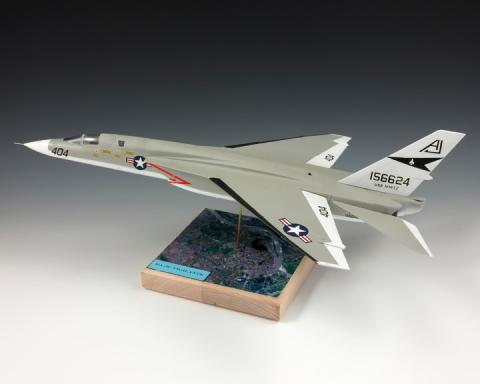
RA-5C Vigilante
The development of the RA-5C Vigilante by North American during the 1950s reflected the post-war sparring between the Navy and Air Force. Though developed as a carrier-based, heavy bomber, the Navy found it better suited to reconnaissance work during the Vietnam War. Courtesy of Chuck Stewart.
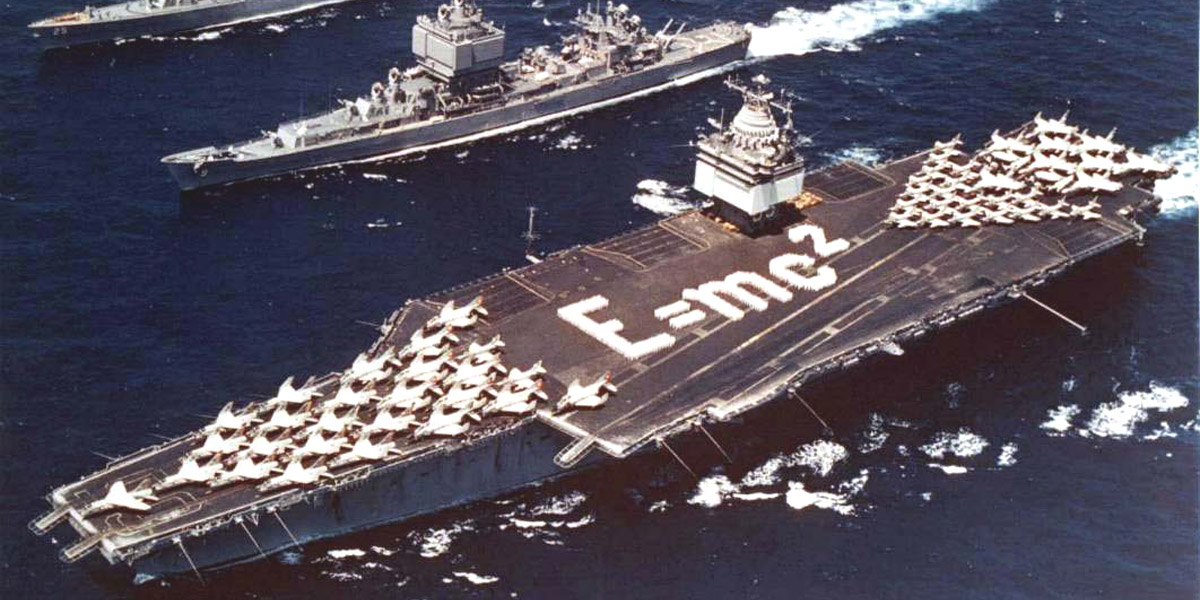
Korean War
The Korean War proved the value of the aircraft carrier in the nuclear age. The war also proved that the aircraft carrier and its jet aircraft was the mainstay of U.S. military power.
Naval aircraft provided much needed air support at the beginning of the war, as the U.S. Air Force mobilized for the fight. Carrier air wings were instrumental in destroying enemy supply depots, bridges, roads, and railways. General MacArthur saw them as vital in supporting ground forces and maintaining air superiority against enemy MiGs. When the tide turned in November of 1950 as Chinese forces pushed Allied units south, Navy aviators covered the retreat.
To prepare for the Cold War, the United States developed strategic aircraft, concealed intercontinental missiles throughout the Midwest, and launched a fleet of ballistic missile submarines. The strength of its defense, however, lay in the nation's surface fleet. President John Kennedy argued, "Control of the seas means security; control of the seas means peace; control of the seas can mean victory."
The U.S. Navy quickly mobilized its carriers for combat in the Korean War, including the Midway-class carriers and World War II-era ships that were converted to accommodate jet aircraft. Navy planes averaged 900 sorties per day, compared to 100 by the enemy. Over 250,000 sorties were flown by the Navy, contributing 1/3 of the total air effort. The case for Cold War carriers was made. The Navy began the war with 15 active carriers and ended it with 38 in service.
Artifacts

Neil Armstrong
Neil Armstrong in his flight suit aboard the USS Cabot, 1949. Courtesy of Purdue University Libraries, Karnes Archives and Special Collections.
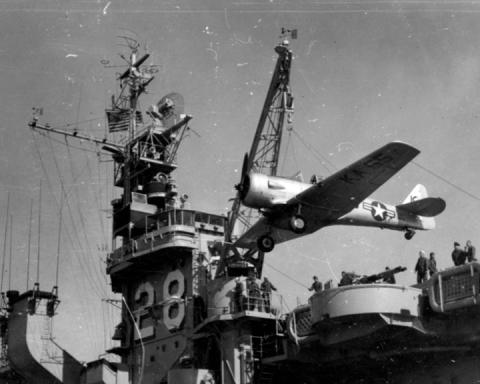
USS Cabot
Loading aircraft on the USS Cabot. Courtesy of Purdue University Libraries, Karnes Archives and Special Collections.
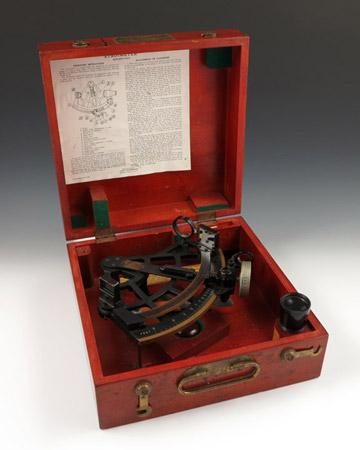
Stadimeter
This stadimeter, an optical device used for range-finding, was used aboard the USS Leyte (CV 32), one among the 24 Essex-class carriers produced for action in World War II. Leyte saw extensive service during the Korean conflict. Loan Courtesy of The Mariners' Museum, Newport News, Virginia. Gift of the U.S. Army Transportation Center, Navigation Branch, Ft. Eustis, Virginia.
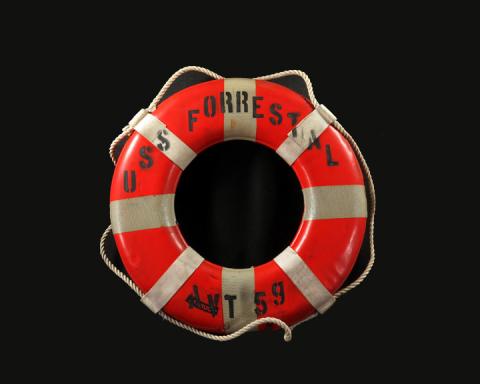
Life Ring Buoy
Life ring buoy from the USS Forrestal (CV 59). Courtesy of the Naval History and Heritage Command, Washington Naval Yards.
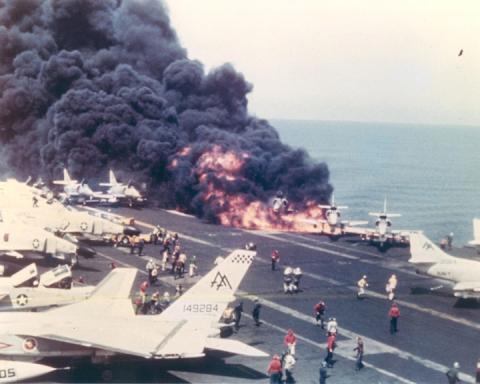
USS Forrestal
Aircraft burn on the deck of the USS Forrestal (CVA 59) in the Gulf of Tonkin, July 29, 1967. Courtesy of RVAHNAVY Association.
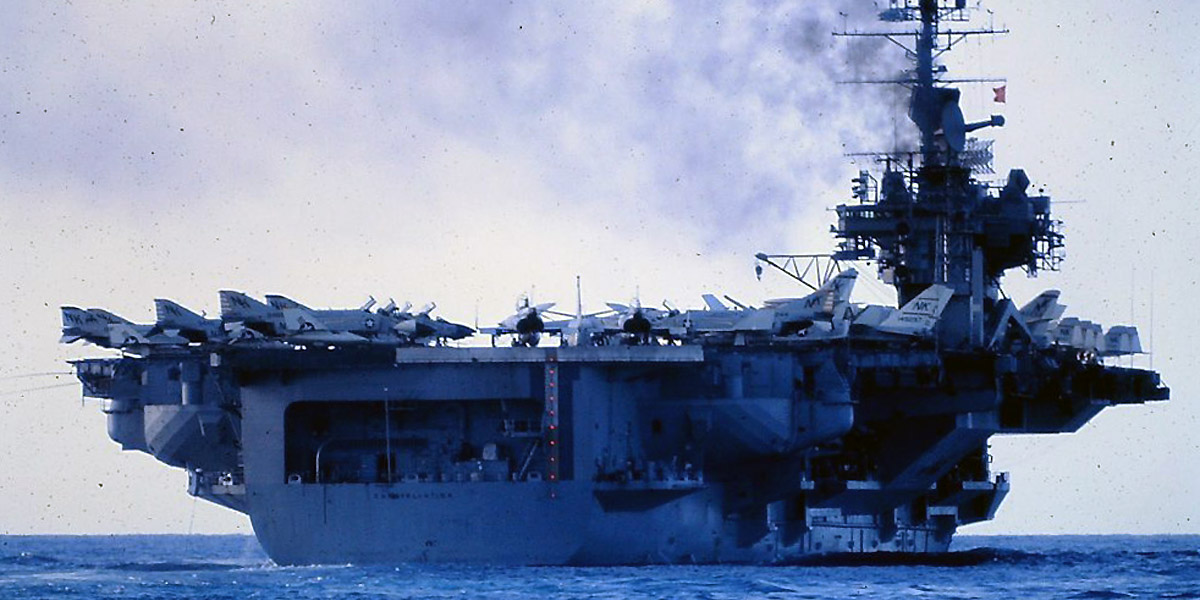
Vietnam War
The Vietnam War presented new challenges for American aircraft carriers. While technological advances provided naval aviators with greater strike potential, diplomatic issues put them at greater risk.
While Korea illustrated the need for carriers in modern conventional combat, Vietnam put them to the test. The Navy utilized both modernized World War II-era carriers and new super carriers during the Vietnam War. Twenty-one carriers participated in 86 war cruises. Task forces were deployed to two sectors off the coast of Vietnam - Yankee Station to the north and Dixie Station to the south.
Naval aircraft bombed North Vietnamese targets and supported the movements of American soldiers. Soviet surface-to-air missiles, which were deployed by the North Vietnamese, changed naval aviation tactics. To avoid the missiles, aircraft had to either fly higher, diminishing the accuracy of their bombs, or lower, exposing them to small arms fire. Nonetheless, naval aircraft were instrumental in knocking out enemy vehicles, roads, bridges, barracks, and other defenses to aid American ground forces.
Artifacts
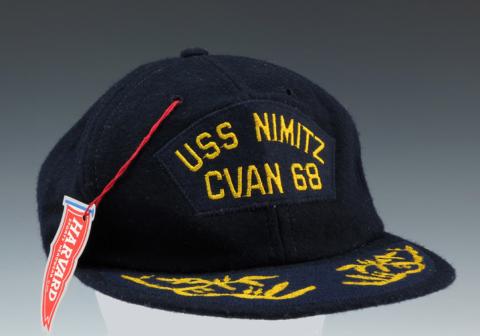
USS Nimitz cap
USS Nimitz (CVN 68) cap given to President Gerald R. Ford at the ship's commissioning on May 3, 1975. Courtesy Gerald R. Ford Presidential Museum.
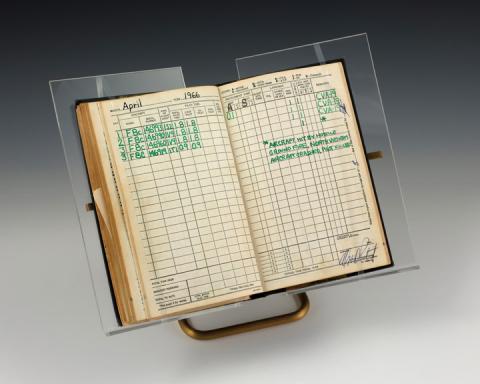
Aviators Flight Log Book
Lt. Richard Lee Law's Aviators Flight Log Book from the Vietnam War. Law flew more than 200 combat missions through two deployments. He was killed in action when his F-8 Crusader was hit by ground fire in April 1966. Loan Courtesy of the National Naval Aviation Museum, Pensacola, Florida.
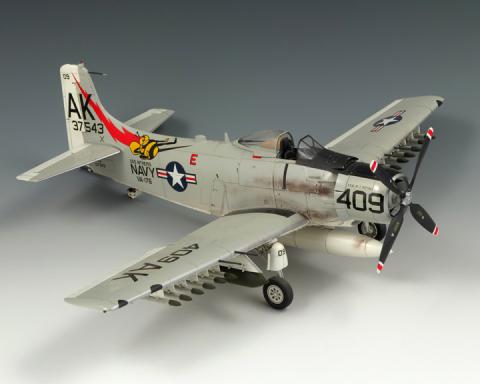
Douglas A-1 Skyraider
The Douglas A-1 Skyraider served the U.S. Navy as a first-line, carrier-based aircraft for over two decades. It was flexible, fast, reliable, and maneuverable, and saw extensive combat in the Korean and Vietnam Wars. Loan Courtesy of Andrew DeBoer.
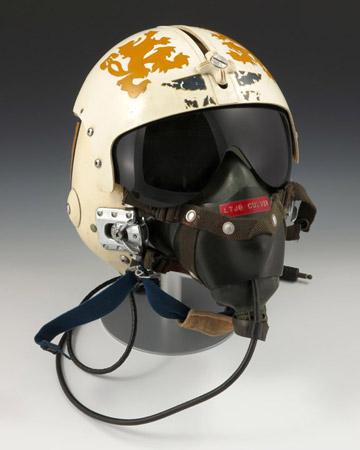
Naval Flight Helmet
Vietnam War-era Naval flight helmet. Loan Courtesy of the the Kalamazoo Air Zoo.
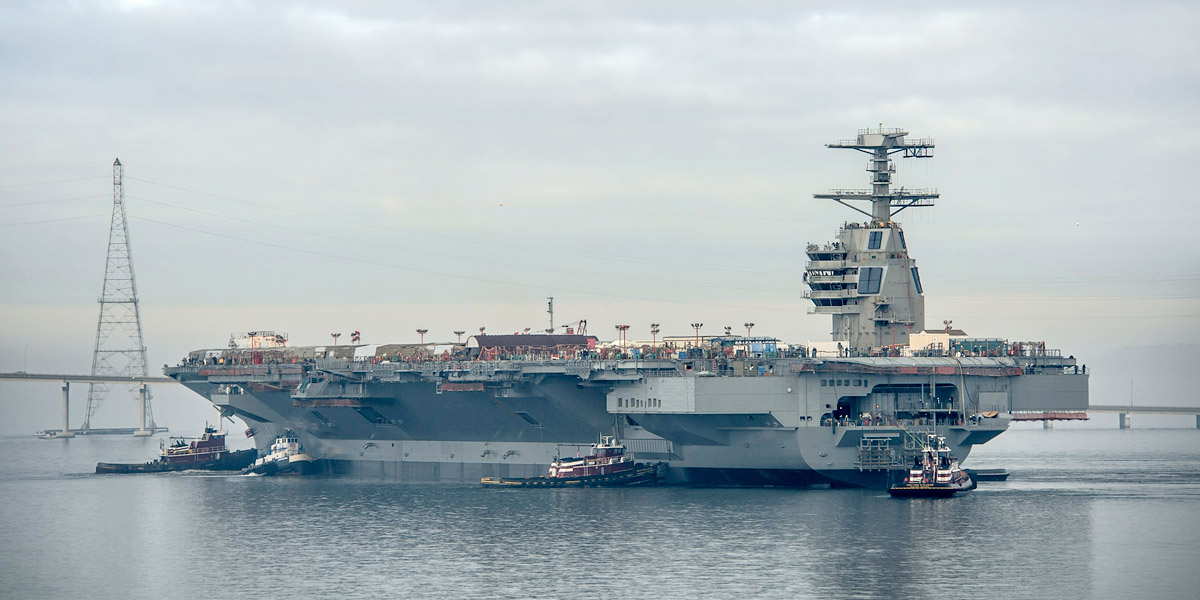
The Ford Class
By 2012 the oldest aircraft carrier in the fleet, the USS Enterprise (CVN 65), had been in service for 51 years; the Nimitz-class design was also reaching the end of its ability to be improved. Navy engineers began drafting CVN 21, the title given to the program to construct a new class technologically advanced super-carrier.
The first ship of the new class would have the hull number CVN 78. In 2006, Virginia Senator John Warner, who had served as Secretary of the Navy under Presidents Nixon and Ford, proposed naming the ship after Gerald Ford. Then-President George W. Bush agreed.
The USS Gerald R. Ford (CVN 78) is similar to the Nimitz-class carriers. Each has a hull of a similar design and length, each can launch four aircraft from their decks, and each can achieve more than 30 knots at sea. But the Ford is a carrier for a new century. Ford will be able to launch four fully loaded aircraft, where flight deck limitations restrict Nimitz to launching lighter aircraft. Ford also abandons the steam and hydraulic launch and recovery systems of past carriers. Electromagnetic launching and arresting systems will send aircraft aloft and trap them on return at a rate much faster than the Nimitz-class.
CVN 78 is fitted with two small, efficient nuclear reactors. These are enough to drive the launching rails and recovery lines, as well as a new antenna system. A smaller "island" (the superstructure that towers above the flight deck), is moved farther aft to create space for easier aircraft handling. A new lift system delivers munitions to the flight deck in a way that is safer and more efficient.
These are among the changes and efficiencies that result in a reduction in crew size and maintenance cost. The power generated by the reactors is enough to handle the full demands of the ship with enough in reserve to accommodate future improvements in technology and weaponry; the Gerald R. Ford (CVN 78) will be taking the seas well into the later decades of this century.
Naming Ceremony for the USS Gerald R. Ford (CVN 78)
The naming ceremony was held at the Pentagon Auditorium on January 16, 2007.
Pentagon Auditorium
January 16, 2007
Vice President Cheney, members of the Ford family, distinguished guests, welcome, and thank you for coming to participate in today’s naming ceremony.
To be chosen as an aircraft carrier’s namesake is a rare honor.
A U.S. Navy aircraft carrier is a symbol that is recognizable throughout the world.
It represents American power.
It is a reminder of America’s global interests, and global reach.
It is, in the eyes of the American people, a safeguard in a troubled and dangerous world.
At moments of crisis, Americans from presidents to schoolteachers to cabdrivers anxiously await the latest news of an aircraft carrier’s progress, knowing that wherever threats emerge, an American carrier will get the call.
Today it is my great pleasure to announce that the Department of the Navy’s newest aircraft carrier, CVN 78—the first in a new class of carriers—will be named--USS GERALD R. FORD.
President Ford, as many Americans have over the years come to fully appreciate, was an historical figure, a great president, and a man of the highest character.
America has been blessed, in the eyes of many, with leaders who were able to steer the American ship of state through dangerous waters during our Nation’s most difficult crises.
We think of Abraham Lincoln during the Civil War, Franklin Roosevelt during World War II, and Ronald Reagan during the Cold War.
President Ford assumed the presidency during the greatest Constitutional crisis since the Civil War, at a time when the public’s faith in government was shaken.
But America was blessed once again with a leader for the times, a man with the integrity and character to heal the nation and restore trust in the presidency.
It is worth recalling an episode in President Ford’s life that is illustrative of his character.
After Ford was chosen to replace Spiro Agnew as vice president, the FBI assigned 350 agents from 33 field offices to conduct an exhaustive background check on him. The FBI sent 70 agents alone to Ford’s hometown of Grand Rapids, Michigan. Soon then-Congressman Ford’s office in Washington, DC received a stream of phone calls from friends and associates who wanted to let him know that they were being questioned. Ford had one stock reply: “Tell them the truth—give them everything.” It was a philosophy that served him well over a long lifetime of public service, and that would serve him well as president.
His legacy includes service on an aircraft carrier during World War II, an experience made a lasting impression on him of a carrier’s capabilities. His Naval service was followed by 25 years in Congress, the vice presidency, the presidency, and an active career in support of worthy causes in the long twilight of his life.
President Ford’s reputation has steadily grown over the past three decades, and the judgment of history now recognizes the rightness of his most difficult and controversial decisions.
President Ford was heavily criticized at the time for signing the Helsinki Accords of 1975. And yet those agreements established the principle of individual rights, put a spotlight on the plight of Soviet refuseniks, and set the stage for the fall of the Soviet Union sixteen years later.
The Ford presidency will always be remembered for the pardon that was granted to Richard Nixon. The pardon was widely unpopular at the time, but it is now viewed as a critical step in moving our Nation forward.
President Ford did something that is all too rare in American politics—he put the national interest above his own political interest. He sacrificed his political career but he later earned a Profile in Courage award for his actions, and, even more important, the delayed but enduring respect of a grateful Nation.
Whether dealing with a dire financial crisis in New York City, the Vietnam War, or an economy ravaged by inflation and a world oil crisis, President Ford made tough decisions based on what he thought was the right thing to do.
In doing so, he set a standard of character and decency that future generations will respect and admire, and a standard of leadership for the United States Navy to uphold.
President Ford, I am pleased to say, had been informed before he passed that we had decided to name CVN 78 after him, and I know that he was enormously proud of and grateful for the honor.
What a wonderful capstone to a life in which his connection with aircraft carriers was deep and personal. He served aboard a carrier during war. As president, he commanded carriers in the fleet. During his tenure as president, he also commissioned USS NIMITZ, the first in its class of nuclear-powered carriers. No one could have appreciated more the honor of having a carrier named after him than President Ford.
May the future Sailors of USS GERALD R. FORD always show themselves to be worthy of their ship’s name, and may they always honor the legacy of a great man.
Thank you.
Pentagon Auditorium
January 16, 2007
Vice President Cheney, Secretary Winter, Admiral Mullen, members of the family of Jerry Ford, men and women of our Armed Forces, ladies and gentlemen:
I want to thank Senator Warner for his leadership on last year’s Defense Authorization Act in including the provision that made this day possible, and I want to commend the Navy and Secretary Winter for following through on the suggestion in that bill that we name CVN 78 in honor of President Gerald Ford. I was pleased to co-sponsor Senator Warner’s amendment because of the special pride this honor would bring to President Ford’s heart, and because it rings so true as a memorial to him.
In 1941, not long after Gerald Ford opened a law practice in Grand Rapids, the Japanese attacked Pearl Harbor. Gerald Ford enlisted in the Navy within the week.
At first, Ford served in the physical education branch, and this gifted athlete coached all nine sports that were offered. He soon grew restless, though, and needed to join the fight. Ford asked to be transferred to service at sea, and was assigned to a light aircraft carrier, the USS Monterey. He would later write that there he saw “as much action as I’d ever hoped to see.” With Ford serving as assistant navigator, athletic officer and anti-aircraft battery officer, the Monterey fought in many of the major operations of the South Pacific, earning 10 battle stars during his service.
Perhaps Lieutenant Ford’s finest hour at sea, however, was a battle not with the enemy, but with the elements. In December 1944, a massive typhoon slammed the Monterey, with waves topping 70 feet. Chaos reigned as the planes on board caught fire, and several broke free from their cables. Many of the sailors were incapacitated; Admiral Halsey ordered the Monterey abandoned; and flames threatened to consume the carrier. But then – thirty years before President Ford would right our ship of state – Lieutenant Ford helped save the Monterey and its men.
At great personal risk, Jerry Ford led a team down to the hangar deck to battle the fire. With gas tanks exploding around them and thick smoke choking the air, they evacuated the stricken men and then extinguished the fire. The fight lasted for hours, but the Monterey and almost all of her sailors survived. The teamwork that Jerry Ford learned playing football at the University of Michigan was surely put to the test that day. And the “we’re all in this together” feeling of community, instilled in him by his Grand Rapids upbringing, just as surely contributed to his leadership on the Monterey.
After the war, Gerald Ford returned to practice law in Grand Rapids but soon felt a new call to service. When he ran for Congress, his naval record was clearly an asset, but more important than how that service helped him was how it had changed him. Ford’s naval service had inspired in him a transformation similar to that of Michigan’s great Senator Arthur Vandenberg, another son of Grand Rapids who had evolved from an isolationist to an internationalist.
With Vandenberg’s support, Ford ran an underdog primary campaign against the isolationist incumbent. Ford’s upset victory was a reflection of how highly voters thought of him personally and also how much had changed in American politics.
The people of Michigan’s Fifth District recognized that Gerald Ford was the right man for the times, and years later the rest of America would reach that same judgment. The Watergate scandal slammed our nation like a political typhoon, and thank goodness Gerald Ford was there to lead us with the same steady courage he had displayed on the Monterey.
As Commander in Chief, President Ford resolved, in his words, “to make our Navy as it has been, as it will be, and as it must be – the best Navy in the whole world.” Today, we help keep that pledge with this new aircraft carrier named in his honor, and we renew that pledge in his name to maintain the best navy in the whole world and to help defend beyond his and our lives the nation that Jerry Ford loved so much.
Pentagon Auditorium
January 16, 2007
Thank you very much. And, Secretary Winter and Chairman Levin, Senator Warner, Chief Mullen, it's great to be here this afternoon to participate in a very special ceremony that has great meaning, obviously, for our late President's family, for the men and women of the Navy, and of course, for the nation.
I've been looking forward to this gathering of friends and colleagues, and President Bush asked me to come this morning and extend his good wishes to everybody, as well.
If the purpose of naming an aircraft carrier is to convey the confident spirit of our military, and the good and just causes that America serves in the world, then we have certainly accomplished that purpose here today. The name Gerald R. Ford belonged to a man who gave a lifetime of devoted service to our country, reflecting honor on the United States Navy, on the House of Representatives, on the Vice Presidency, and on the Presidency. The naming of a carrier is a fitting tribute to the man, and it's thrilling for all of his family and friends.
Known before today only as CVN 78, the Gerald R. Ford already has years of planning behind it, and will join the fleet seven or eight years from now. The construction of these carriers represents a bipartisan commitment by the United States Congress to carefully prepare our military for challenges far into the future. One of the very practical lessons I learned at the Pentagon is that every President, every Secretary of Defense, and every military chief of staff deploys a force that is, in large part, the result of decisions made many years earlier by his predecessors. Because our own generation is taking that responsibility seriously, the Gerald R. Ford, and sister ships in the new class of nuclear-powered carriers, will help ensure the sea power of the United States for the next half century.
President Ford himself, with his background and the good common sense we all remember, was deeply committed to an active foreign policy, and to maintaining the strength of our military. Having fought for our country in the Second World War, he understood that events on distant shores can have a direct impact on our own security. He understood that protecting the American people requires defending our interests in far-away places. He understood that for our forces to be credible, they must be able to deploy wherever and whenever needed -- and this, in turn, requires the power to sail the oceans of the world, in control of the surface, the sub-surface, and the skies overhead.
As Commander-in-Chief, Gerald R. Ford applied American influence with wisdom and foresight. He stood firmly by the men and women of the armed forces, and left office with the military in a higher state of readiness and morale than when he found it.
President Ford was rightly proud of his record on national security. And, like the team player he always was, he was quick to share the credit with the fine people who served alongside him -- from Henry Kissinger to Brent Scowcroft to Don Rumsfeld and Jack Marsh. It was my privilege, as well, to be on Jerry Ford's team, both during a difficult transition and through all the challenges of his time in office. All of us who were there count the experience as one of the truly great periods in our lives, when we worked for one of the most genuine, upright, and considerate men we have ever known.
Only three weeks after President Ford's passing, there is still a sense of loss for all of us, most especially for Betty and her children. This has been a time of reflection for everyone who had the honor of knowing President Ford and of serving with him. It's also been a time for re-connecting with old friends, reliving the things we shared, and looking back with gratitude on the good life of the man we were proud to call our leader. President Ford will always be an example to us of personal kindness, of loyalty, and of coolness under pressure. We remember how this longtime legislator proved to be a natural-born executive with a decisive, well ordered mind. He was comfortable with responsibility -- and because of his sturdy character and his Navy experience, Jerry Ford knew a thing or two about riding out a storm.
He didn't shrink from a tough call. In such a moment, even with a popular choice in plain view and the easy path laid straight out in front of him, President Ford asked only what was right for the United States of America, and acted accordingly. When criticism came, he kept his head about him, focused on his job, and persevered. History looks favorably on such a man, and President Ford's reputation has, indeed, grown even greater in the three decades since he left this city.
Today in our country, and at posts around the world, the flag of the United States remains at half-staff in memory of President Gerald Ford. But I think it would please him to know that today we're also looking to the future. He always reminded us that there's work to do; servicemen and women who need our support; and a call to duty in a world that benefits greatly from American power and American values. He would be proud, as well -- modestly so, but proud nonetheless -- of this coming addition to the Navy he joined 65 years ago, led as Commander-in-Chief, and respected all the days of his life.
When completed, the USS Gerald R. Ford will be a sight to behold: 100,000 tons of American ingenuity and power; rising 20 stories above water level; about as long as the Empire State Building; and able to sail the oceans for 20 years without refueling. We look forward to the day she joins the fleet and begins her long and steady service to the United States of America.
Pentagon Auditorium
January 16, 2007
11 a.m.
Mr. Vice President, Secretary England, Secretary Winter, Senator Levin, Senator Warner, Admiral Mullen, General Swan, Distinguished Guests, Ladies and Gentlemen:
The Ford Family this morning is filled with tremendous pride. No doubt, my brothers and I could spend several hours talking about how much the Navy’s tribute meant to Dad. However, before talking about today’s remarkable tribute, with your indulgence, Secretary Winter, I’d like to share some thoughts from Mother and our family. Mother is doing well and is watching this ceremony on the Pentagon Channel.
During the past three weeks, we’ve been deeply moved by the outpouring of affection and remembrances from across the United States. We particularly want to express what an honor it was to have the men and women of the United States Armed Forces present with us at every ceremony and service of the State Funeral. There is nothing – absolutely nothing – that would have made Dad prouder. The dedication, compassion, and dignity of those brave men and women strengthened and comforted Mother and our family at every step of the way. They will always have a special place in our hearts - always.
We would like to extend a personal thank you to President and Mrs. Bush and to Vice President and Mrs. Cheney for their many kindnesses and, most of all, for their decades of friendship with Dad and our family. We remember fondly Mr. Joe Hagin and the White House Staff along with the U.S. Secret Service for their many kind deeds and for their moving farewell tribute in front of the White House. We are particularly grateful to the House of Representatives and the Senate, especially both Sergeants-At-Arms and their staffs, for their assistance and for the unprecedented historical tributes that both bodies conducted for Dad.
And, General Swan, if I may, a personal comment. The kindness and care that you provided to Mother as her personal escort is a gift for which we will always be grateful. You embody the highest ideals of our great country, General Swan, and your assistance to Mother was, quite frankly, beyond description. Thank you, sir.
As we gather today for the naming of CVN-78, let me first say to Senator Levin and Senator Warner, thank you for your tireless efforts in make this Naming Ceremony a reality. And thank you for your unceasing support of our men and women in uniform.
The naming of CVN-78 as the USS Gerald R. Ford represents more than assigning a name to a naval vessel. There is now a unique bond between CVN-78 and its new namesake. The permanence of Dad’s name and his legacy is forever instilled into this magnificent vessel and the men and women who will someday occupy her decks. And it is that special bond that gives our family such pride.
The USS Gerald R. Ford also shares a unique bond with another ship and her crew. As many of you know, several years ago the USS America was towed into the Atlantic Ocean and then sunk in a series of tests to verify critical components of the CVN-78 carrier program. Those tests were essential to maximizing the survivability of the future carrier fleet, including CVN-78. The USS America and her proud crew set a magnificent example of patriotism and unwavering service to the U.S. Navy. And now their valor lives on within the spirit of the USS Gerald R. Ford. For that gift and for their service, we are deeply grateful to the America and her crew.
I’ve thought a lot about how to convey Dad’s gratitude upon learning that Secretary Winter was considering naming CVN-78 the USS Gerald R. Ford. I struggled to find words adequate to express the emotions that Dad shared privately with Mother, Mike, Jack, Steve, and me regarding CVN-78. And, as was so often the case with Dad, the answer was found in his own words.
A few weeks before his death, Dad wrote a letter to our friend Greg Willard regarding CVN-78. In the letter, he described how much the tribute then under consideration by Secretary Winter meant to him. Dad wrote to Greg:
“In closing, please permit me a personal reflection. In my life, I’ve received countless honors. But none was greater than the opportunity to wear the uniform of Lieutenant Commander in the United States Navy. On an aircraft carrier in the South Pacific during World War II, I learned to respect, and to rely on, my comrades as if my life depended on them – because it often did. As a World War II veteran, I yield to no one in my admiration for the heroes of Omaha Beach and Iwo Jima. At the same time, I take enormous inspiration from their grandsons and granddaughters who are writing new chapters of heroism around the globe. Thus, it is a source of indescribable pride and humility to know that an aircraft carrier bearing my name may be permanently associated with the valor and patriotism of the men and women of the United States Navy.”
Dad conveyed in words precisely how each of us in the Ford family feels about this wonderful tribute. So today and in our every tomorrow, we will fondly remember those words with the knowledge that the USS Gerald R. Ford and her crew will forever embody a tribute to Dad that was -- and is -- without equal.
Secretary Winter, on behalf of Mother and the entire Ford Family, please accept our sincere gratitude and appreciation for the extraordinary honor which you have given Dad.
May God Bless and watch over the USS Gerald R. Ford and her crew. And may God Bless America.
Thank you very much.
Artifacts
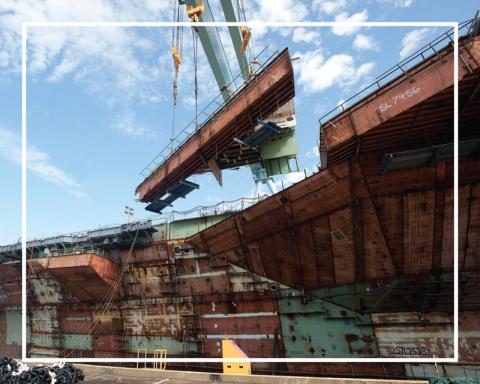
Structural Completion - May 8, 2013
This milestone event of 100 percent structural completion culminated three years of intense work by Newport News Shipbuilding. It was the last of 162 superlifts in the ship's modular construction. Ye-Ling Wang Bird, Navy deputy program manager for future aircraft carriers elaborated, "She (CVN 78) will provide the Navy with greater operational capability, built-in flexibility to accommodate future improvements and improved survivability at reduced total ownership cost to the taxpayers."
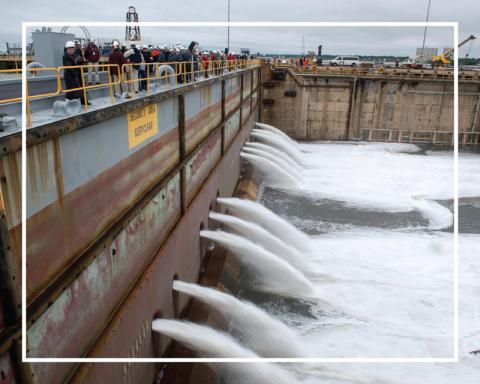
Dry Dock Flooded - October, 11, 2013
Over 100 million gallons of water flooded the dry dock containing the USS Gerald R. Ford. Susan Ford Bales did the honors by pressing a series of buttons, unleashing the torrent. As Rolf Bartschi explained, "Flooding of the dry dock, floating of the ship, and transfer to the outfitting pier all represent the successful completion of a tremendous amount of hard work by our talented shipbuilders."
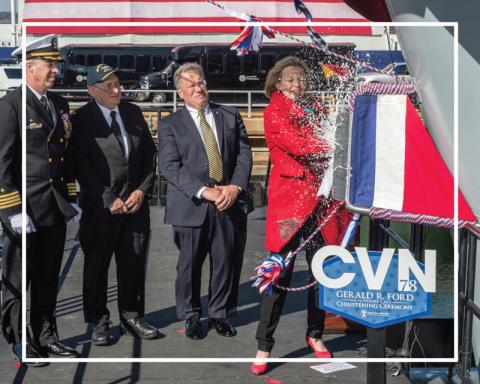
Christening - November 9, 2013
Susan Ford Bales christens the USS Gerald R. Ford, introducing a new class of super carrier to the world. Attended by thousands, the ceremony involved the traditional breaking of a bottle of American sparkling wine across the ship's bow. The millennia-old tradition honors the individuality of the ship and the life ahead of her. In one of his final letters, Gerald R. Ford admits, "it is a source of indescribable pride and humility to know that an aircraft carrier bearing my name may be permanently associated with the valor and patriotism of the men and women of the United States Navy."
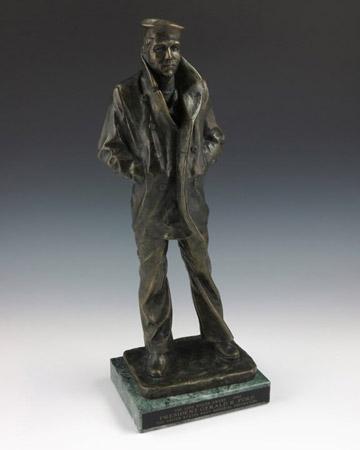
Lone Sailor Award
Lone Sailor Award presented to Gerald R. Ford in 1992. This statuette will eventually be displayed on the USS Gerald R. Ford. Loan Courtesy of the President Gerald R. Ford Historical Legacy Trust.
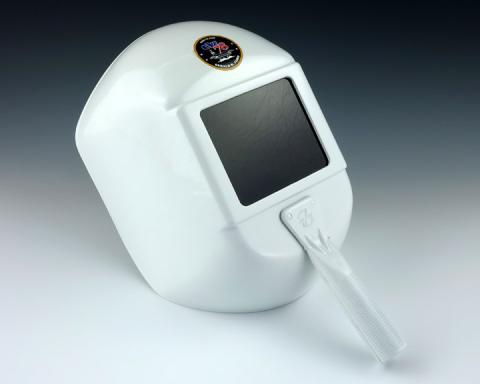
Welder's Mask
Ceremonial welder's mask used to cut ship's sponsor Susan Ford Bales' initials into a plate of steel as an official authentication of the keel. Loan Courtesy of the Gerald R. Ford Presidential Foundation.
Carrier Classes
Images Courtesy of Stanley Stokes and the Navy Art Collection, Washington Navy Yards
Technological advances and war have prompted the development of aircraft carriers. Prior to World War II carrier size was limited by international treaty. As World War II era carriers grew, their decks and hanger bays were crowded with piston-powered fighter, bomber, and torpedo airplanes.
During the Cold War, carriers grew even larger to accommodate the bigger, heavier jet aircraft. These "super" carriers were over 1,000 feet in length, deep-hulled, and had angled steel plated flight decks on which jets launched and landed with greater speed.
The advent of nuclear propulsion in the 1960s extended the carrier's cruising range. Additionally, modular construction techniques, advanced nuclear reactor technology, and novel launching and recovery systems expanded their role in warfare, and diplomatic and humanitarian missions.
World War II Admirals
All Images Courtesy of the Navy Art Collection, Washington Navy Yards
The events of World War II spurred both technological and personnel development. A new group of "fighting admirals" used naval aviation to neutralize the German U-boat threat in the Atlantic, shrink the boundaries of the Japanese empire in the Pacific, and adapted quickly to carrier warfare. Iconic naval leaders Admirals Leahy and Moffet laid the foundation for this new style of warfare. Admirals King, Nimitz, Halsey, Spruance, and Mitscher developed the strategies and transformed the carrier task force into the most effective form of naval warfare, unrivaled to this day.
